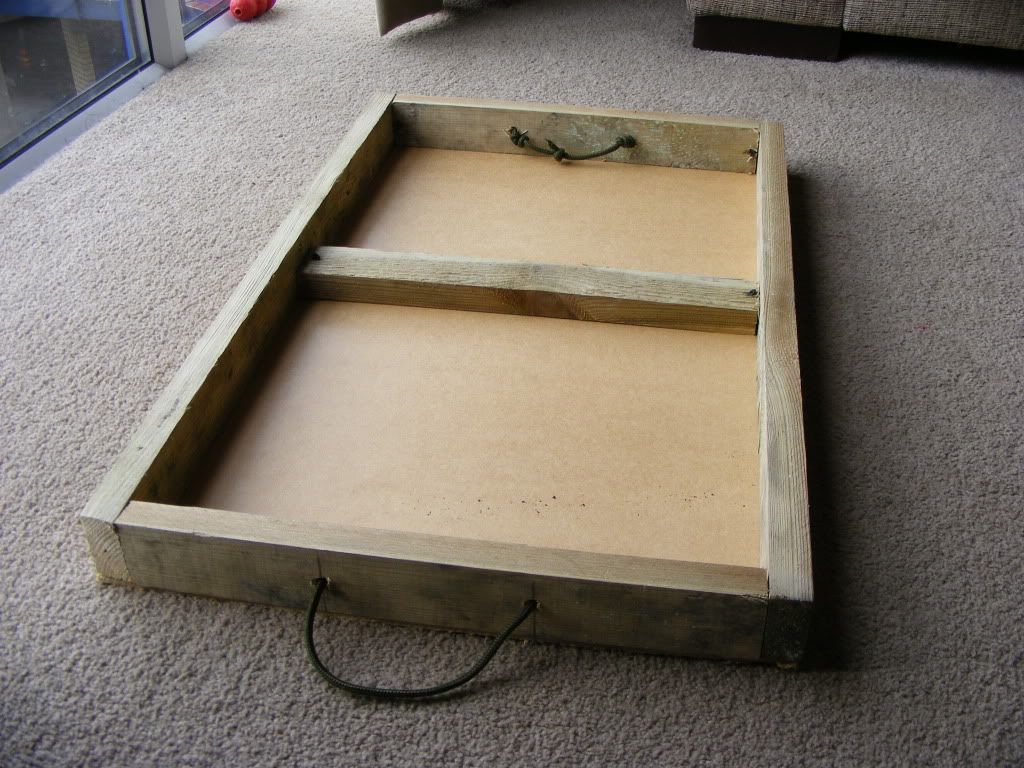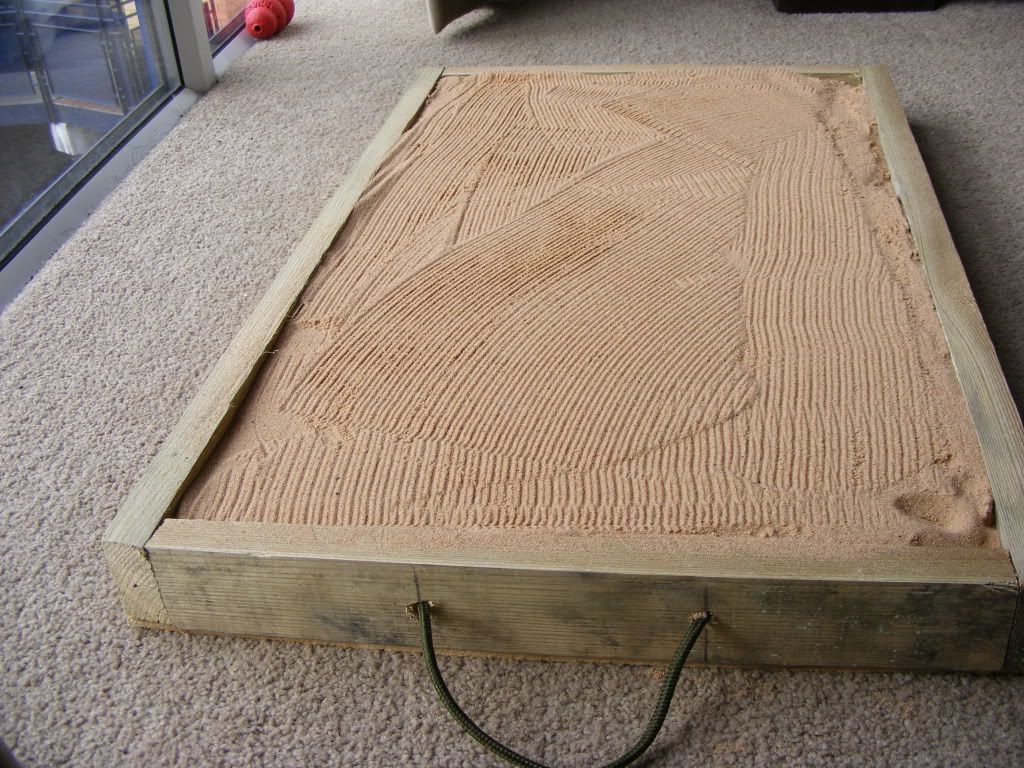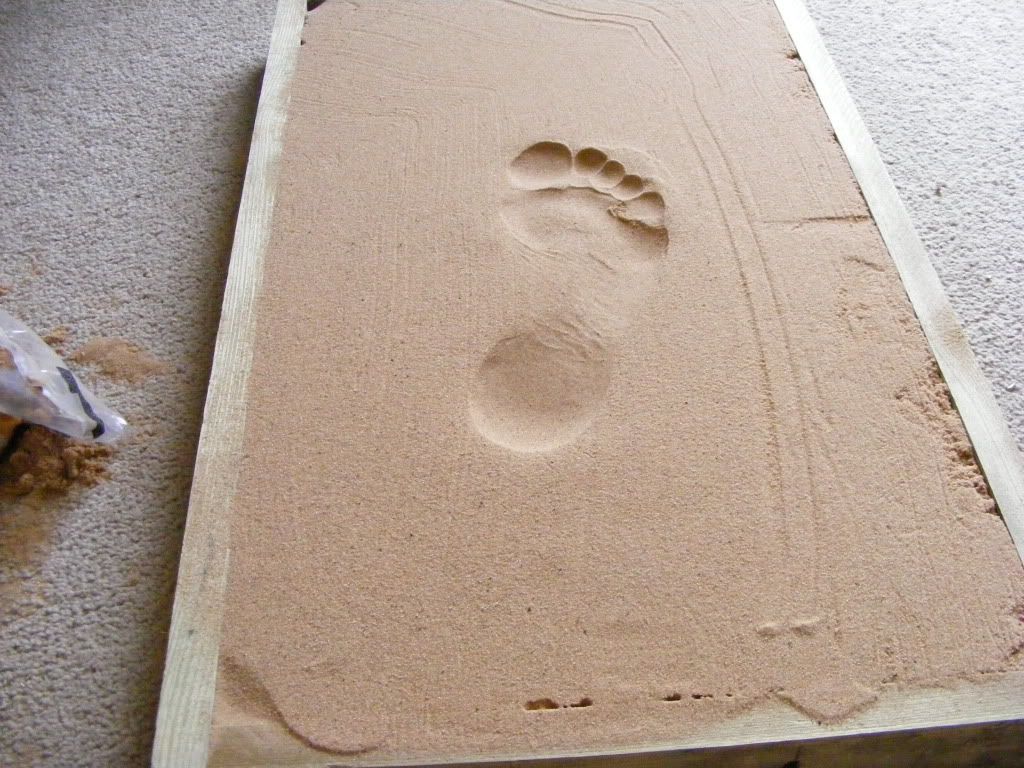Or you could just use a 3-D cameraIf you have a seperate flash gun you can light the subject from 8 different directions - this can then be used with 3D software to generate a 3D image of the track. However we are getting a bit CSI at this point.
Have you any handy tracking tips or kit.
- Thread starter 21st century pict
- Start date
-
- Tags
- photography prints tracking tracks
-
Come along to the amazing Summer Moot (21st July - 2nd August), a festival of bushcrafting and camping in a beautiful woodland PLEASE CLICK HERE for more information.
You are using an out of date browser. It may not display this or other websites correctly.
You should upgrade or use an alternative browser.
You should upgrade or use an alternative browser.
Pick a central point in what will be the image. Take a simple picture. Move the camera 6" to the right. Do it again. 3D done.
Look to infinity between the two pictures, one for each eye = 3D.
Look to infinity between the two pictures, one for each eye = 3D.
Apologies if this has been posted before.
A handy “tip” I was taught and still us, and easy to pass onto kids and other people:
Really
Fat
Twonks
Can’t
Disco
Dance
Regularity - Foot prints and othe rman made type stuff creating patterns.
Flattening -
Flattening of grass, Moss etc
Transfer -
transfer of a substance to another. Eg. Sand to rock, mud into water, water onto rock etc
Colour -
underside of leaves being lighter, have them moved, the colour change of foliage etc.
Disturbance -
general disturbance of the area, looks like something has moved through, or if your quick enough the disturbance of mud still floating in water.
Discardables -
Rubbish, Little, human/animal waste, bits of equipment etc.
Ground sign is anything from the Ankle down, top sign is anything above.
If a track is “hot” it’s within 2 hours.
Cold if any longer. Obviously the effects of disturbed water or weather impacts on mainly of the principles.
A handy “tip” I was taught and still us, and easy to pass onto kids and other people:
Really
Fat
Twonks
Can’t
Disco
Dance
Regularity - Foot prints and othe rman made type stuff creating patterns.
Flattening -
Flattening of grass, Moss etc
Transfer -
transfer of a substance to another. Eg. Sand to rock, mud into water, water onto rock etc
Colour -
underside of leaves being lighter, have them moved, the colour change of foliage etc.
Disturbance -
general disturbance of the area, looks like something has moved through, or if your quick enough the disturbance of mud still floating in water.
Discardables -
Rubbish, Little, human/animal waste, bits of equipment etc.
Ground sign is anything from the Ankle down, top sign is anything above.
If a track is “hot” it’s within 2 hours.
Cold if any longer. Obviously the effects of disturbed water or weather impacts on mainly of the principles.
Define a "hot track."
In less than 21 days, my front yard has gone from knee-deep snow and -25C nights through water and mud to dry and a little dusty.
Practically every night, the local mule deer (4 of them) walk across the yard. (My trail cam decided to pack it in.)
I don't need to take more than a dozen steps to watch those tracks age.
It's a fairly predictable series of changes.
Without that, I'd suggest a wood carving of a deer hoof-print. Mark the ground with it. Pound it in an inch or so.
Then watch those tracks age. Leafy, sandy, muddy, everything that you can arrange.
In less than 21 days, my front yard has gone from knee-deep snow and -25C nights through water and mud to dry and a little dusty.
Practically every night, the local mule deer (4 of them) walk across the yard. (My trail cam decided to pack it in.)
I don't need to take more than a dozen steps to watch those tracks age.
It's a fairly predictable series of changes.
Without that, I'd suggest a wood carving of a deer hoof-print. Mark the ground with it. Pound it in an inch or so.
Then watch those tracks age. Leafy, sandy, muddy, everything that you can arrange.
Funny you should mention sand traps as i decided to make a portable one tonight.Here a few pictures.



I am hoping to get out at the weekend to get some badger prints.[/QUOTE
isn't it good to see innovation, for a good purpose.
Define a "hot track."
In less than 21 days, my front yard has gone from knee-deep snow and -25C nights through water and mud to dry and a little dusty.
Practically every night, the local mule deer (4 of them) walk across the yard. (My trail cam decided to pack it in.)
I don't need to take more than a dozen steps to watch those tracks age.
It's a fairly predictable series of changes.
Without that, I'd suggest a wood carving of a deer hoof-print. Mark the ground with it. Pound it in an inch or so.
Then watch those tracks age. Leafy, sandy, muddy, everything that you can arrange.
hot track is whatever target you are tracking is within 2 hours of you.
When you find the grizz tracks on top of your own, it gets downright steamy.
Carry in a bag of domestic sandbox sand, or scrape some up from the local terrain. Spread it around. No wood frames needed. BTDT, poured plaster of paris in the tracks.isn't it good to see innovation, for a good purpose.
tl;dr:
Add an elastic band to your walking stick. (<snark>Or go full Mears and wrap spuce root around a withy...</snark>)
Put one end of your stick on a track. Move the band along the stick until it aligns with the same foot track along the trail.
Measure that length until you find the next track.
Same idea as that Mears episode with the helicopter leap-frogging trackers, but with fewer camerapeople and radios.
Add an elastic band to your walking stick. (<snark>Or go full Mears and wrap spuce root around a withy...</snark>)
Put one end of your stick on a track. Move the band along the stick until it aligns with the same foot track along the trail.
Measure that length until you find the next track.
Same idea as that Mears episode with the helicopter leap-frogging trackers, but with fewer camerapeople and radios.
So tell me what difference that makes in terms of tracking skills?hot track is whatever target you are tracking is within 2 hours of you.
Apologies if this has been posted before.
A handy “tip” I was taught and still us, and easy to pass onto kids and other people:
Really
Fat
Twonks
Can’t
Disco
Dance
Regularity - Foot prints and othe rman made type stuff creating patterns.
Flattening -
Flattening of grass, Moss etc
Transfer -
transfer of a substance to another. Eg. Sand to rock, mud into water, water onto rock etc
Colour -
underside of leaves being lighter, have them moved, the colour change of foliage etc.
Disturbance -
general disturbance of the area, looks like something has moved through, or if your quick enough the disturbance of mud still floating in water.
Discardables -
Rubbish, Little, human/animal waste, bits of equipment etc.
Ground sign is anything from the Ankle down, top sign is anything above.
If a track is “hot” it’s within 2 hours.
Cold if any longer. Obviously the effects of disturbed water or weather impacts on mainly of the principles.
I notice there is no mention from your friend of smell when tracking. Do you not use smell?
And sound. Sound is imho very important!
If you hear the sound of an approaching Grizzly, you will for sure make a brown track in your undies!

If you hear the sound of an approaching Grizzly, you will for sure make a brown track in your undies!
Smell is a great way to track. I can always smell a fox and cigar or cigarette and perfumme or aftershave smells tell you someone has passed by very recently. Horses and deer have a distinctive smell.Otter spraint smells quite distinctive too. Smell is a good clue especially this time of year crushed wild garlic where something has passed by is another good clue.
So tell me what difference that makes in terms of tracking skills?
Depends on what you are tracking, where you are tracking, weather/environmental aspects.
Obvious one is if the target has moved through water, depending on the type of water obstacle, and surround terrain, but it takes a while for it to settle and the ground beneath it.
Or a broken branch, depending on the colour, texture and surrounding environment, the break will look fresh or old. Or if you are good and your tracking a person, you could tell if they have tried to limit their sign left behind, but rubbing dirt into a broken branch to eliminate the main principles.
Various different tracks and ground sign age differently or can look tampered with, it comes down to your experience. It’s not a pinpoint accuracy method, it’s a way of bracketing it. You won’t ever be able to determine the sign was left 1hour and 58seconds ago.
Found a nice big turd as your tracking? Go ahead and stick a finger in it and see how warm it is. The hotter it is, the fresher the sign.....
But it gives you a good basis to work off.
I notice there is no mention from your friend of smell when tracking. Do you not use smell?
Yep, I would count it as discardables because it’s something the target has left behind.
The most obvious one is tracking humans, depending on the environment but you can tell instantly when humans have been or continue to be nearby.
Again, it comes down to experience. Stick to the main principles and you can’t go far wrong.
Last edited:
A pal has just given me a cutting from today's April 9th sun newspaper. The big cat presumed to be a panther has been filmed by a woman near praa sands in Cornwall, and a roe deer was found with its throat torn out in Devon.. near grey wethers Stone circle. A perfect tracking opportunity for someone .
There have been reports in the local press. I guess the sun has picked up on it to put something exciting in and get us away from brexit boredom.
Just read up on it a bit more. Police found a large 5 inch footprint. It has been identified as a big cat by experts. This time of year we get quite a few sightings due to this beast attacking newborn lambs and sheep that have just given birth. Some recent sightings have been between 10 and 20 miles from my house. Ooh errr! Anyone for a wild camp?
Just read up on it a bit more. Police found a large 5 inch footprint. It has been identified as a big cat by experts. This time of year we get quite a few sightings due to this beast attacking newborn lambs and sheep that have just given birth. Some recent sightings have been between 10 and 20 miles from my house. Ooh errr! Anyone for a wild camp?
Last edited:
tl;dr:
Add an elastic band to your walking stick.
Put one end of your stick on a track. Move the band along the stick until it aligns with the same foot track along the trail.
Measure that length until you find the next track.
Never seen anyone need to do that. Take long time to follow game that way.
The most obvious one is tracking humans, depending on the environment but you can tell instantly when humans have been or continue to be nearby.
Ha Ha, we have no books or classes on tracking. Smell can tell you individual animals. If you have game around you it is sometimes possible to smell individual animals with practice. regular hunters can just walk along a track and with experience tell how many animals - or people - have passed. We have one old black bear here which has its own smell just like most humans.
The is not unique to hunters here. When I visited the UK, I met a game warden in one of your forests who could also do that with deer.
But if you smoke you won't be good at tracking by smell.
Last edited:
